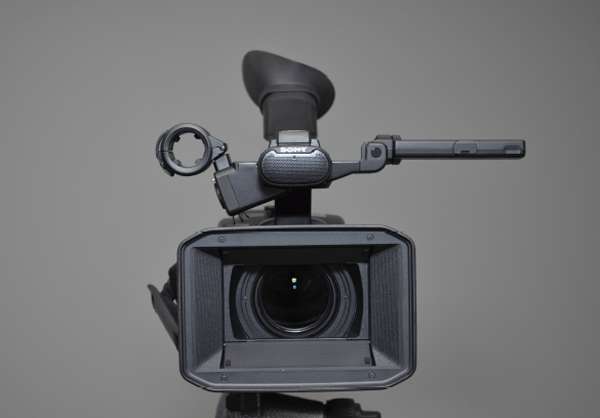by Mitch Goldman
More often than not, we find ourselves trying to get “real people” to look down the barrel of the lens and immediately be brilliant on-camera. Take it from me -this will almost never happen. So how do you get people to relax and be their best?
I was working on a corporate shoot in which a financial analyst was to give a quarterly report directly into the camera. She entered the meeting room that was serving as our studio, picked her way across some monitor cables and extension cords to find the camera operator with his nose pressed up against his monitor. “Okay,” he said without looking up, “look right into the lens, relax and…. GO!” She may have known her stuff but she sounded as if she was trying to recite the Sanskrit alphabet backwards; it was obviously not working. Take two. “This time,” said our shooter, still looking at his beautiful picture, “Just be yourself. GO!” And I said to myself, “This is going to be a long, long day.”
The point is that we spend so much time obsessing about our fantastic lenses and the brilliant compression scheme of this camera versus that one that we might forget all about what it is that we are trying to capture. And who could blame us? Years ago there was someone whose job it was to direct talent, another person to do the make-up, someone else to capture audio; all you had to worry about was making pretty pictures. Now you might be lucky to have one of those people on your team. As a result more and more responsibility lands on the head of the one person.

There are some basic things you can do to prevent shoot day catastrophes. Before your subject arrives look around at your set and think about the very first impression he/she will have. This is when neatness counts. Put the empty cases away and make sure there is a clear spike mark indicating where talent should be. Establish a distinct pathway to that spot that is clear of cables (this is especially important with older folks, women in heels and people with limited mobility).
Greet them as they enter and have a bit of a conversation with them. It doesn’t matter what you talk about—did you see that game last night? How about this weather?—but it is essential that THEY SPEAK. They have to get used to the sound of their own voice in this room. Look them in the eye and let them know that they are being heard.
Ease into your work flow. You’re miking them, checking audio, checking camera, adjusting lighting, all the while maintaining that easy, conversational environment. Your subject might want to check notes or look in a mirror. Don’t distract them—you have plenty else to do—but let them know that you are still paying attention to them.
Don’t make a big deal about starting to record. That easy, breezy conversational mode your talent is in? You want to keep that feel for the presentation. We are doing everything we can to keep them from being “deer in the headlights.” So press that button and let it roll; pixels are cheap. Besides, sometimes that rehearsal take is the best one you’ll get all day and you won’t have it if you don’t record it.

Now we come to a topic about which we need to be absolutely clear: is your subject supposed to be looking directly into the lens or not? If the answer to this question is “yes” then nothing else will do. Yes, it might be easier for the subject to have someone to look at but don’t assume (or let your client assume) that the subject looking you in the eye or speaking to an interviewer who is just off camera will play as if they were looking right at the camera. It won’t. When they watch it later, even if they don’t know exactly why, they won’t be happy with it. If you need your subject to look at the camera then you have to find a way to get them to do it no matter how difficult it might be.
Uh oh, we’re getting a bit of that flop sweat! What to do? Step away from the camera, look at your talent and get them to talk about something in their natural voice — “I need to change a battery,” or “Hey, I love that scarf!” The idea is to get him to stop obsessing about his own presentation and really be himself for a moment. After he does that you can say, “Did you hear the way you talked when you told me about that trip to Ireland when you got the scarf? I want you to talk in that exact same way about this new widget your company is selling.” Have him practice this to you rather than to camera. It might work. At least it’s worth a try.
I have had many (many!) job titles through the years—producer, director, camera operator, editor—but the best might be one that was given to me by a favorite client: “mood engineer.” What I have found is that if you can get that one thing right then everything else will often fall into place.


